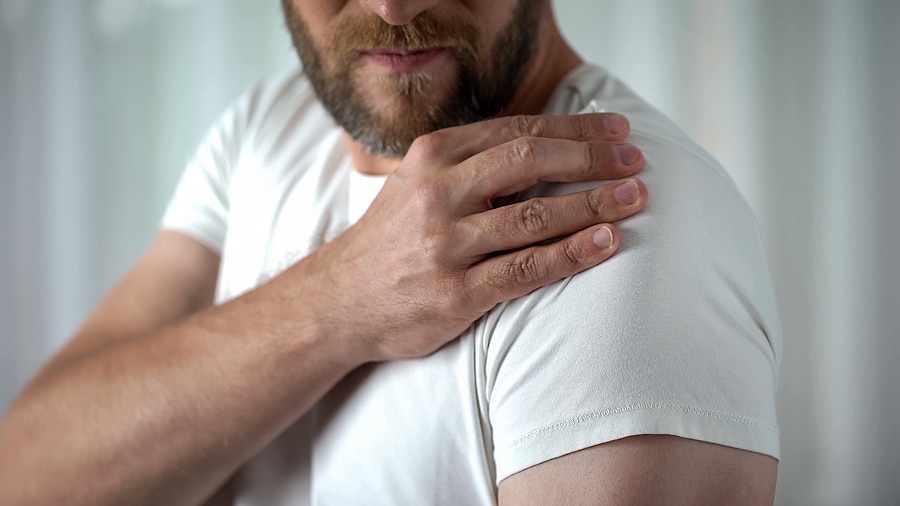A rotator cuff tear is a common injury that affects the complex ball-and-socket shoulder joint. The ball of the upper arm bone (humerus) is held in its socket in the shoulder blade (acromion) by the rotator cuff, a group of muscles and tendons. A rotator cuff tear occurs when one of those tendons pulls away from its attachment site on the humerus, usually due to trauma or overuse. The most common cause is a fall onto an outstretched arm.
Not all rotator cuff tears cause pain or dysfunction. This is due to the presence of the rotator cable, a suspension-bridge-like ligament that transmits forces across the rotator cuff complex, allowing it to remain functional in the event of certain types of tears.
Scientists continue to study the anatomy and function of the rotator cable. This unique anatomical feature of the rotator cuff was discovered relatively recently through research (traditional shoulder imaging tests are not sensitive enough to consistently detect it).
A Respected Shoulder Surgeon Dedicated to Advancing His Field
Christopher C. Schmidt, MD, is a nationally distinguished shoulder surgeon who specializes in rotator cuff repair. As a surgeon-scientist, Dr. Schmidt performs extensive research and he strives to quickly transfer his discoveries from bench to bedside, ultimately improving patient care through evidence-based medicine. He has published more than 150 book chapters and peer-reviewed scientific articles and abstracts on rotator cuff surgery, and his work is published in respected peer review orthopedic journals.
Dr. Schmidt recently participated in a study entitled Locating the Rotator Cable During Subacromial Arthroscopy: Bursal- and Articular-Sided Anatomy. The goal of the study was to enhance the overall understanding of the rotator cable and thereby improve the surgical management of rotator cuff tears.
The abstract of the study is reproduced below:
Locating the Rotator Cable During Subacromial Arthroscopy: Bursal- and Articular-Sided Anatomy
Thomas R. Zink, DO, Christopher C. Schmidt, MD, Dimitrios V. Papadopoulos, MD, Ryan J. Blake, BS, Michael P. Smolinski, BS, Anthony J. Davidson, BS, Christopher S. Spicer, MS, Mark C. Miller, PhD, Patrick J. Smolinski, PhD
Background:
The rotator cable (RCa) is an important articular-sided structure of the cuff capsular complex that helps prevent suture pull out during rotator cuff repairs (RCRs) and plays a role in force transmission. Yet, the RCa cannot be located during bursal-sided RCRs. The purpose of this study is to develop a method to locate the RCa in the subacromial space and compare its bursal- and articular-sided dimensions.
Methods:
In 20 fresh-frozen cadaveric specimens, the RCa was found from the articular side, outlined with stitches, and then evaluated from the bursal side using an easily identifiable reference point, the intersection of a line bisecting the supraspinatus (SS) tendon and posterior SS myotendinous junction (MTJ). Four bursal-sided lengths were measured on the SS-bisecting line as well as the RCa’s outside anteroposterior base. For the articular-sided measurements, the rotator cuff capsular complex was detached from bone and optically scanned creating 3D solid models. Using the 3D models, 4 articular-sided lengths were made, including the RCa’s inside and outside anteroposterior base.
Results:
The RCa’s medial arch was located 9.9 ± 5.6 mm from the reference point in 10 intact specimens and 4.1 ± 2.4 mm in 10 torn specimens (P = .007). The RCa’s width was 10.9 ± 2.1 mm, and the distance from the lateral edge of the RCa to the lateral SS insertion was 13.9 ± 4.8 mm. The bursal- and articular-sided outside anteroposterior base measured 48.1 ± 6.4 mm and 49.6 ± 6.5 mm, respectively (P = .268). The average inside anteroposterior base measurement was 37.3 ± 5.9 mm.
Discussion:
The medial arch of the RCa can be reliably located during subacromial arthroscopy using the reference point, analogous to the posterior SS MTJ. The RCa is located 10 mm in intact and 4 mm in torn tendons (P = .007) from the posterior SS MTJ. If the above 6-mm shift in location of the RCa is not taken into consideration during rotator cuff suture placement, it could negatively affect time zero repair strength. The inside anteroposterior base of the RCa measures on average 37 mm; therefore, rotator cuff tears measuring >37 mm are at risk of rupturing part or all of the RCa’s 2 humeral attachments, which if not recognized and addressed could impact postoperative function.
Conclusion:
The RCa cannot be seen during bursal-sided arthroscopy; however, its medial arch is located on average 10 mm from the reference point or posterior SS MTJ in intact tendons and 4 mm in small to large rotator cuff tears. Based on the above findings and the mechanical literature, RCR strength for tears with tendon loss can be improved in single-row repairs by positioning vertical mattress stitches <4 mm from the posterior SS MTJ and in suture-bridging techniques by placing the medial row stitches >10 mm from the posterior SS MTJ; this ensures that the horizontal mattress sutures are within the RCa. However, in rotator cuff tears with minimal to moderate medial-to-lateral tendon loss, placement of stitches medial or in the RCa runs the risk of substantially shortening the SS tendon, which may lead to tension overload. The average inside anteroposterior base of the RCa measures 37 mm. Rotator cuff tears involving or just posterior to the CHL measuring >37 mm are at risk of partially or completely rupturing the RCa’s humeral insertions. If these types of rotator cuff injuries are not recognized and appropriately treated, they could negatively impact postoperative function.
Consult With One of the Best Shoulder Surgeons in Pittsburgh
If you would like to consult with Dr. Schmidt about your shoulder injury, call (877) 471-0935 to request an appointment. His offices are conveniently located in the North Hills of Pittsburgh and Washington, Pennsylvania.




